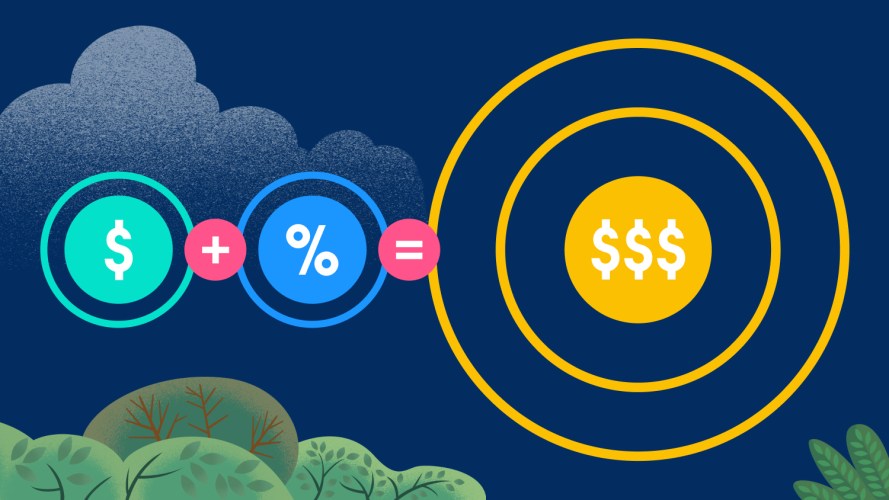3 Ways Generative AI Will Help Marketers Connect With Customers
3 min read


Figuring out the right way to price your products can be tricky. Whether you’re selling software or designer handbags, your pricing strategy has a big impact on your sales success. There are a lot of ways to go about it, but if you’re looking for simplicity, cost-plus pricing might be a good bet. Below, we’ll talk about what cost pricing is, how to use it effectively, and some of the biggest advantages — and potential drawbacks.
Get complete visibility of your pipeline, forecast, and team — with Revenue Intelligence from Sales Cloud.



Also known as markup pricing, cost plus pricing is a simple way to determine the sales price of a product. In this method, a fixed percentage is added to the total production cost for one product unit, yielding its selling price.
Cost plus pricing uses a simple formula: the cost of manufacturing, labor, and overhead (cost of goods sold or COGS) multiplied by one plus your desired profit or markup percentage (in decimal format) to get your selling price. We’ll explain how to figure out your markup next.
Formula: (Total production cost) × (1 + Desired profit) = Selling price
Sometimes called profit, the markup is a fixed percentage you add to the cost of production (COGS) to determine your selling price. When setting your markup, you should consider how much profit you need to buy additional raw materials for production, what your revenue targets are, and what your competitors are charging for similar products. If your selling price is too high, you could scare off customers. But if it’s too low, you could be leaving money on the table.
To better understand the cost plus pricing method, let’s look at an example. As a reminder, the formula is:
(Total production cost) × (1 + Desired profit) = Selling price
If your production costs are $50 and you want to achieve a 40% profit margin, your selling price would be $70. $50 x (1 + 0.40) = $70.
Cost plus pricing is one way to price your products and create profit for your business. But don’t make up your mind just yet. There are some pitfalls.

3 min read

6 min read
Cost plus pricing can be a good starting point for setting the cost of your products. However, consider some drawbacks, and be prepared to adjust to market conditions.
Let’s dig a little deeper into some of the other considerations of the cost plus pricing method and when it might be appropriate or not appropriate to use. It’s important to consider these factors:
Moderately priced retailers such as clothing or cosmetic companies use a cost plus pricing formula due to their product variety. They can apply different markups to different products based on their production cost.
For example, a cosmetic seller can easily justify different prices for a skincare product like an eye serum versus a tool like a makeup brush based on their production costs.
Tech industries have a harder time with this pricing structure because the overall value they provide is much higher than the cost of production. It can be argued that using a value-based pricing model (explored below) creates a more robust margin for SaaS companies.
Elastic demand is the relationship between demand and other variables, such as the availability of similar products, advertising pressure, and customer income. If the price increases or decreases, the quantity demanded can change significantly. These shifts make cost plus pricing difficult because even small price increases can lead to a significant drop in sales.
If your product is less elastic, meaning the overall demand is less likely to change due to need, cost plus pricing might work well for your business. Let’s say that your customer data reveals that your customers have a strong commitment to your product and will likely continue to buy even if the price increases. This is evidence that cost plus pricing is a good move for your business. Certain prescription drugs, for instance, are less elastic products — their demand remains high despite price fluctuations.
Cost plus pricing lets you choose if you want to charge more or less than your competition. Here are two things to think about as you analyze the competition:
If the considerations above are giving you pause, here are some alternative pricing strategies to evaluate:
1. Value-based pricing: This strategy focuses on the perceived value of your product or service rather than just production costs. For example, a streaming service offers personalized subscription tiers based on viewing habits, giving frequent movie watchers a better price per film.
2. Penetration pricing: The strategy sets a low initial price to quickly gain market share and brand awareness. For example, an airline lures first-time flyers with $99 one-way deals.
3. Dynamic pricing: This approach adjusts prices based on real-time factors like demand, inventory levels, and competitor actions, like when rideshare apps use surge prices during peak hours and high-demand times of the year.
4. Freemium pricing: Offers a free basic version of your product or service while charging for premium features or functionality. For instance, an SEO platform might offer a free version with limited searches and keyword insights. Once you upgrade, you get a more detailed view of keyword performance, along with recommendations for how to rank.
5. MSRP (manufacturer-suggested retail price): This is the price the manufacturer of the product suggests you use. MSRP is most often seen in the automobile industry and high-end, luxury goods. The manufacturer determines the production cost and average desired profit margins for the seller, manufacturer, and supplier.
Pricing models are varied and complex and require significant consideration. After all, the model you choose can make or break the future of your business. If you want something simple — at least to start — cost plus pricing is worth considering. It’s a strategy that focuses on production costs while taking your desired profit margin into account. While not ideal for every industry, this simple formula might give you the selling oomph you need to grow.
See how Salesforce CPQ helps sellers close faster, and companies launch new revenue models in days, not months.




Get the latest articles in your inbox.